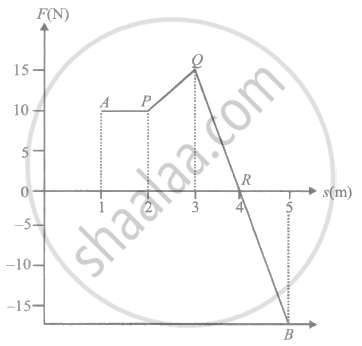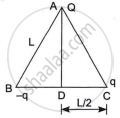Advertisements
Advertisements
Question
What is the work done by the field of a nucleus in a complete circular orbit of the electron? What if the orbit is elliptical?
Solution
Whenever the electron completes an orbit, either circular or elliptical, the work done by the field of a nucleus is zero.
APPEARS IN
RELATED QUESTIONS
In a hydrogen atom, the electron and proton are bound at a distance of about 0.53 Å:
(a) Estimate the potential energy of the system in eV, taking the zero of the potential energy at infinite separation of the electron from proton.
(b) What is the minimum work required to free the electron, given that its kinetic energy in the orbit is half the magnitude of potential energy obtained in (a)?
(c) What are the answers to (a) and (b) above if the zero of potential energy is taken at 1.06 Å separation?
A small test charge is released at rest at a point in an electrostatic field configuration. Will it travel along the field line passing through that point?
We know that electric field is discontinuous across the surface of a charged conductor. Is electric potential also discontinuous there?
Guess a possible reason why water has a much greater dielectric constant (= 80) than say, mica (= 6).
Two point charges of 10C each are kept at a distance of 3m in the vacuum. Calculate their electrostatic potential energy.
Why must electrostatic field be normal to the surface at every point of a charged conductor?
A body moves from point A to B under the action of a force, varying in magnitude as shown in the figure. Force is expressed in newton and displacement in meter. What is the total work done?

Potential energy of two equal negative point charges 2µc each held lm apart in air is:-
In bringing one electron towards another electrons, the electrostatic potential energy of the system will.
In a region of constant potential ______.
- the electric field is uniform
- the electric field is zero
- there can be no charge inside the region
- the electric field shall necessarily change if a charge is placed outside the region
A point charge q0 is moving along a circular path of radius a, with a point charge Q at the centre of the circle. The kinetic energy of q0 is ______.
Three-point charges Q, q and -q are kept at the vertices of an equilateral triangle of side L as shown in the figure. What is

- the electrostatic potential energy of the arrangement? and
- the potential at point D?
